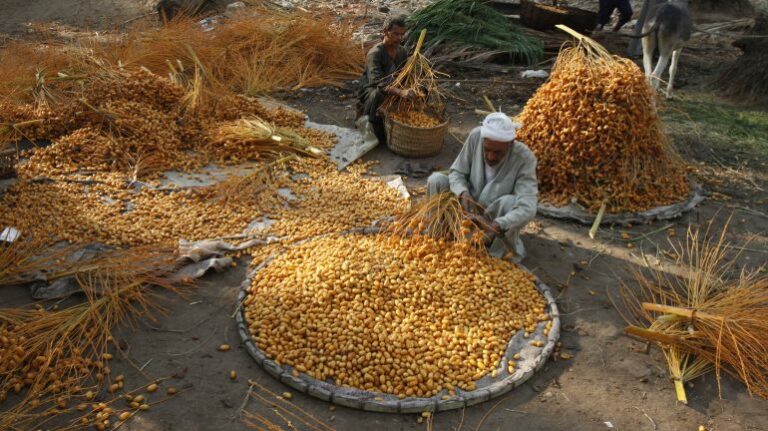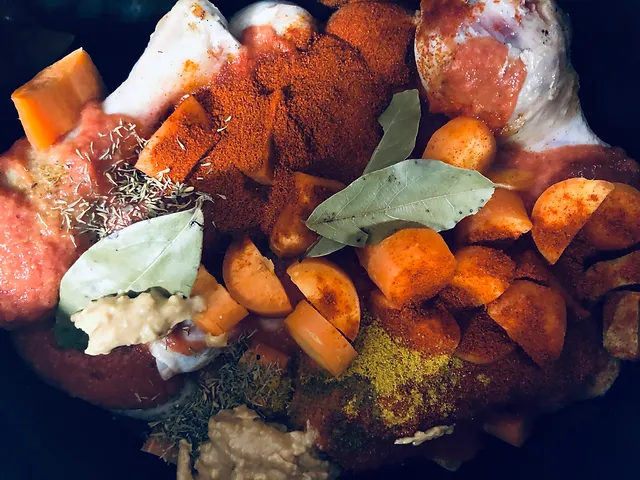Introduction: Libyan Agriculture and Desert Resources
Libya is a country with a diverse geography that plays a significant role in its cuisine. Agriculture and desert resources are two essential factors that have a significant influence on the country’s culinary history. Agriculture in Libya has always been limited due to its arid climate, but the country’s fertile coastal region has allowed for the cultivation of crops such as olives, dates, and grains. In contrast, the vast Libyan desert has provided an abundance of resources such as camel milk, meat, and honey, which have been used in traditional Libyan cuisine for centuries.
The Role of Desert Resources in Libyan Cuisine
The Libyan desert has been a vital resource for the country’s cuisine for centuries. Many traditional dishes use camel milk, meat, and honey as staple ingredients. Camel milk is a highly nutritious and versatile ingredient that is used in both sweet and savory dishes. One famous Libyan dessert that uses camel milk is the ‘asida’, a type of porridge made from flour, water, and sweetened camel milk. Camel meat is also widely consumed in Libya, often cooked in stews or grilled as skewers called ‘shish kabab.’ Lastly, Libyan honey is highly prized and is used to sweeten many dishes, including tea, cakes, and pastries.
Ancient Influences on Libyan Cuisine
Libyan cuisine has been influenced by various cultures throughout its history. The ancient Greeks, Romans, and Phoenicians all had a significant influence on Libyan cuisine. The Greeks introduced olives, which have become a staple food in Libya, while the Romans introduced wheat and barley cultivation. The Phoenicians introduced the use of spices, including cinnamon, cumin, and coriander, which are still used in Libyan cuisine today.
The Role of Arab and Mediterranean Cuisine in Libya
Arab and Mediterranean cuisine have also influenced Libyan cuisine. Due to Libya’s geographical location, its cuisine has been shaped by the neighboring countries of Tunisia, Algeria, and Egypt. Arab cuisine has introduced dishes such as ‘kibbeh,’ a dish made of minced meat and cracked wheat, while Mediterranean cuisine has influenced the use of seafood in Libyan dishes.
Traditional Libyan Dishes: A Fusion of Different Influences
Traditional Libyan dishes are a fusion of different cultural influences. One example is the ‘bazeen,’ a Libyan dish made from wheat flour and water, which is then shaped into a dome. It is traditionally served with a variety of stews that use camel meat or lamb, and sometimes seafood. Another traditional Libyan dish is ‘shakshouka,’ a breakfast dish of eggs poached in a tomato and pepper sauce, which has Mediterranean roots.
Modern Libyan Cuisine: Adaptation and Innovation
Modern Libyan cuisine has adapted to the changing times and has introduced new dishes and techniques. One example is the ‘harissa,’ a spicy paste made from chilies, garlic, and cumin, which has become a popular condiment in Libya. Modern Libyan cuisine has also introduced fusion dishes, such as ‘Libyan pizza,’ which uses traditional Libyan ingredients such as olives and harissa on a pizza base. Overall, Libyan cuisine continues to evolve, with a fusion of different cultural influences, adapting to the changing times while still honoring its traditional roots.


